
Mango disorders and diseases
Good quality mangos are free from diseases and disorders! Customers are not willing to purchase fruit presenting rots or damaged skin. Furthermore fruit that looks good on the outside but presenting brown flesh or soft texture will not lead to happy customers. There are dozens of different diseases and disorders, which are not always easy to recognize. A good diagnosis of the fruit’s health is important. By recognizing the symptoms of a disease or disorder, it can be linked to the cause. If you know the cause, you know what measures can be taken to prevent the disease or disorder in the future.
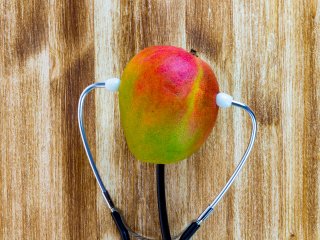
Disease management
Identification of mango disorders and diseases usually takes place by looking at the symptoms. Some symptoms are visible from the outside, while others can only be found internally after cutting. It is important to detect the quality issues as early as possible in the supply chain to reduce further incidence. Retailers can also benefit from knowledge about disorders they may encounter. For them, it is important to know whether the cause lies in a previous stage in the supply chain or is due to their own operations. The main postharvest diseases of mangos are several types of rots but also various physiological disorders and mechanical disorders can be present.
Mango disorder and diseases
-
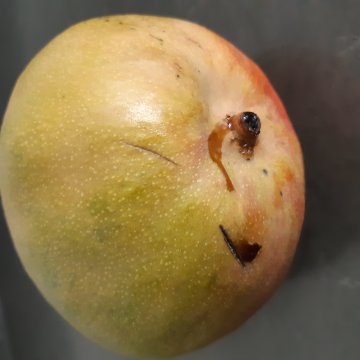
Damage because of rough handling. Photo by WFBR. Handling damage
Rough handling can easily lead to damage to the mangos, at each stage of the supply chain. For example, the effect of rough harvesting can manifest itself in bruises and injuries at a later stage. This mechanical damage not only makes the fruit unattractive, but often also leads to secondary rot development. -
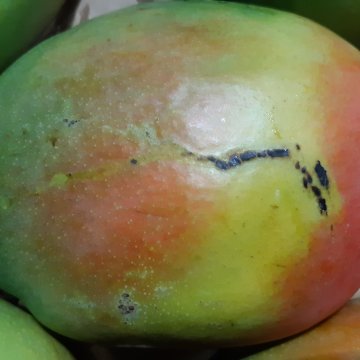
Damaged mango skin caused by latex stain. Photo by WFBR Latex stain
When the fruit is harvested, sap from the cut stem can drip onto the fruit skin. The sap causes latex stains, visible as dark or brown areas, also called sapburn injury. This injury to the skin is due to the acidic nature of the sap. The sap itself becomes pale yellow and transparent when dried. Procedures at harvest should be in place to prevent the latex stain as much as possible. -
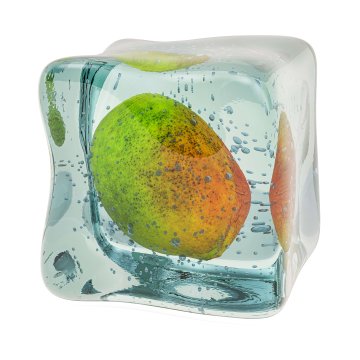
Too cold temperatures may result in symptoms of chilling injury. Photo by AlexLMX/Shutterstock.com Chilling injury
Symptoms of chilling injury include uneven ripening, poor color and flavor, surface pitting, grayish scald-like skin discoloration, increased susceptibility to decay, and, in severe cases, flesh browning. This disorder is caused by storage below the optimum storage temperature which is around 12 °C. Damage depends on the duration and depth of the temperature. -
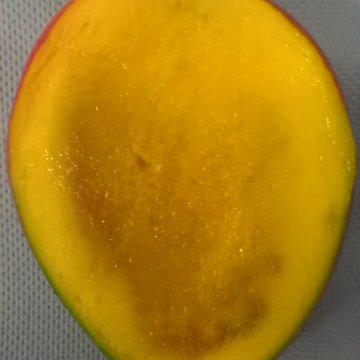
Internal flesh breakdown. Photo by WFBR Internal flesh breakdown
There are various types and causes of internal flesh breakdown. These become visible when the fruit is cut in half. The affected flesh is brown. This disorder can usually be linked to preharvest field conditions (nutrient deficiency). Overripe fruit also develop internal flesh breakdown, it is a consequence of senescence. They may have been stored under suboptimal conditions such as too high temperature or simply stored for too long. -
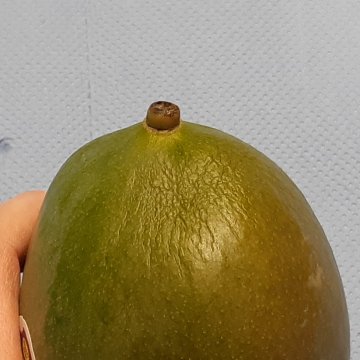
Shrivelled mango skin. Photo by WFBR. Shrivelling
Mangoes are vulnerable to water loss. Shrivelling of the skin is the consequence of (excessive) water loss. The risk of shrivelling symptoms increases with lower relative humidity, higher temperature, longer storage time and damage to the skin. Controlling water loss starts right at harvest by bringing the fruits into the shade. -
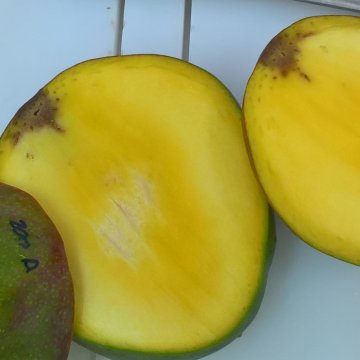
Fungal rot in mango. Photo by WFBR. Rots and decay
Several types of pathological diseases can occur, such as Anthracnose, Diplodia stem-end rot and Rhizopus rot. The decay is often associated with damage or is linked to senescence (stored too long or under unfavorable conditions). Produce can easily start deteriorating already during temporary field storage if they are not handled properly. The development of rot after harvest can be controlled by fast cooling of the harvested fruit and preventing bruising and injuries.